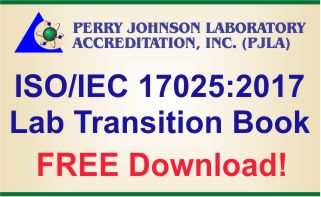

Other offers of translation should be directed to the Eurachem Secretariat for permission. Translation into other languages is encouraged for members of Eurachem.

View/download the leaflet in Turkish (pdf, 483 kB, published ).View/download the leaflet in Spanish (pdf, 310 kB, published ).View/download the leaflet in Russian (pdf, 530 kB, published ).View/download the leaflet in Georgian (pdf, 562 kB, published ).View/download the leaflet in Farsi (pdf, 680 kB, published ).

View/download the leaflet in Estonian (pdf, 445 kB, published ).View/download the leaflet in Bulgarian (pdf, 213 kB, published ).View/download the leaflet in English (pdf, 399 kB, published ).Section 5.4.7 in 2005 has been expanded from Control of data to Control of data and information management.
ISO 17025 2017 CHANGES FROM 2005 ISO
The leaflet is available in several different languages: ISO 17025:2017 addresses changes in technology made in the twelve years since the release of the second edition. This brief Information Leaflet, prepared by the Eurachem Education and training Working Group, gives a quick overview of the main changes in the 2017 edition of the Standard. There is a new emphasis on "risks and opportunities", clearer reference to sampling activities, new requirements around conformity assessment and a new emphasis on metrological traceability. Laboratories use ISO 17025 to implement a quality system aimed at improving their ability to consistently produce valid results.
Emphasis of Change Summary of text/extract from ISO/IEC 17025:2017 Comments 6.3.2 5.3. Corresponding ISO/IEC 17025:2005 Clause No. The need to gain ISO 17025 compliance and accreditation impacts many laboratories. General Accreditation Guidance - ISO/IEC 17025:2017 Gap Analysis April 2018 of 42 ISO/IEC 17025:2017 Clause No. In this course, the participant will become aware of the significant and subtle changes to existing ISO/IED 17025 laboratory system, as well as the necessary steps to ensure conformity to the new Standard. The current release was published in 2017. ISO/IEC 17025:2017 Bridging the Gap from 2005 is a one-day course that gives an overview of the changes made to ISO/IEC 17025 in its latest revision. Among other things, the new Standard has a substantially revised structure, including different management system options. ISO 17025: 2017: ISO 17025 is a quality standard for testing and calibration laboratories. The subsequent webinars will go into more depth on what is required to meet the requirements each of the elements.ISO/IEC 17025:2017 - A New Accreditation StandardĢ017 saw the publication of a new version of ISO/IEC 17025 - General requirements for the competence of testing and calibration laboratories. It will provide you with an overview of the salient differences and similarities between the old and the new standard. This is the 1st of 3 parts to address the structure and requirements the new standard. Is everything old new again? What are the new requirements that need to be addressed? This webinar will discuss the changes in the standard and their impact on your QMS. Although there were only two main clauses in the 2005 revision, Management and Technical Requirements, the 2017 revision contains five clauses that organizes the laboratory activities into a more organized flow. The new version of ISO/IEC 17025 was released on November 19, 2017. One of the changes to the ISO/IEC 17025:2017 standard is in the structure of the document itself. Have the rules changed? What are the new requirements of ISO/IEC 17015:2017? How does the new standard impact laboratories that are already accredited and how do you ensure staff adherence and ongoing compliance to minimize corrective actions arising from accreditation audits? Why you should Attend: Some are still struggling to get accredited and even those already accredited still have issues as evidenced by the number of non-conformances cited during the subsequent biannual audits. Many laboratories have successfully developed and implemented a functional quality management system that not only complies with the management and technical requirements of ISO/IEC 17025:2005 but also meets their needs.


 0 kommentar(er)
0 kommentar(er)
